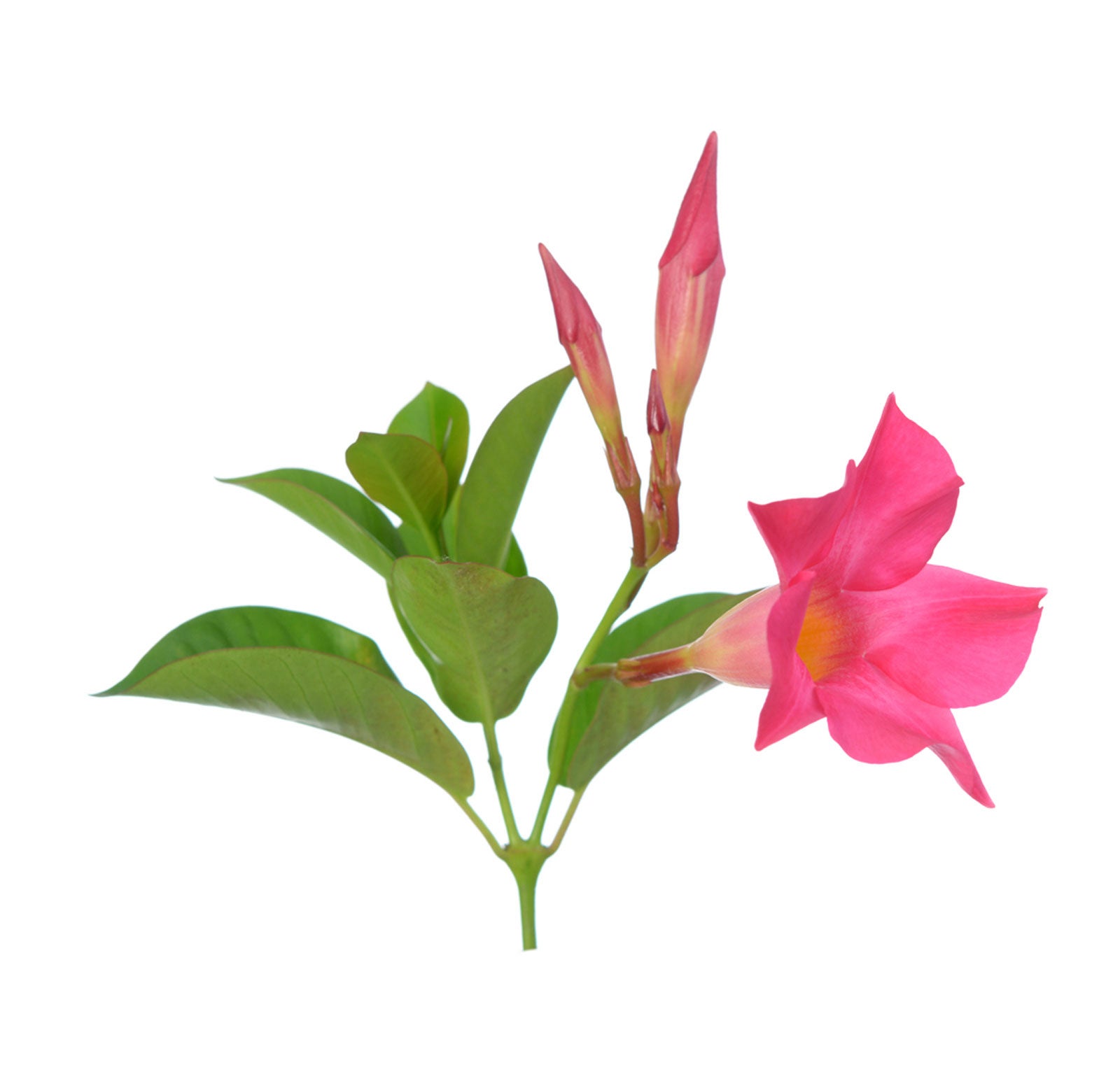Dipladenia Cutting Propagation – How To Root Dipladenia Cuttings


Dipladenia is a tropical vining plant similar to Mandevilla. Many gardeners grow Dipladenia vine from cuttings, either to grace a garden bed or patio or to grow in a pot as a hanging houseplant. If you are interested in rooting Dipladenia plants read on and we’ll tell you exactly how to do it.
Growing Dipladenia Vine from Cuttings
You can grow Dipladenia vine in your backyard if you live in USDA hardiness zones 9 through 11. It’s a real pleasure since the vine grows and flows to 15 feet (4.5 m.), perfect for balcony baskets. Its evergreen foliage lasts all year so can the lovely trumpet-shaped blossoms in warmer climates.
This vine also does well in hanging baskets on a patio or in a sunny living room. To get a potted plant started, all you need is to start rooting Dipladenia plants.
How to Root Dipladenia Cuttings
Although starting some plants from cuttings is difficult, rooting these plants is easy. The plants root quickly and reliably from cuttings as long as you know the appropriate procedure for the Dipladenia cutting propagation.
The first step is to prepare the containers for cuttings. You will need to mix up potting soil that holds moisture but also provides excellent drainage. An equal mix of perlite, peat moss, and sand works well. Pack this mixture into small pots, squeezing out the trapped air.
To start rooting plants, place the pots in a cool space and poke fairly deep holes into the mixture in each. Then go out and take your cuttings. Take care to wear garden gloves, as the sap can irritate your skin.
Take 6 inch (15 cm.) cuttings from a healthy vine, opting for stems with lots of new leaves at the tip. Make the cuts at a 45-degree angle, then clip off all leaves on the lower half of each cutting. Dip the cut ends in rooting powder and insert one cutting into each prepared pot.
Sign up for the Gardening Know How newsletter today and receive a free copy of our e-book "How to Grow Delicious Tomatoes".
Move the pots to a warm, bright location using a heat mat to keep the temperature 60 degrees F. (16 C.) at night and 75 degrees F. (24 C.) during the day. Keep moisture high by misting the foliage, watering when the soil is dry, and covering pots with plastic bags.
After three weeks, the cuttings should have rooted and are ready to transplant.

Teo Spengler is a master gardener and a docent at the San Francisco Botanical Garden, where she hosts public tours. She has studied horticulture and written about nature, trees, plants, and gardening for more than two decades, following a career as an attorney and legal writer. Her extended family includes some 30 houseplants and hundreds of outdoor plants, including 250 trees, which are her main passion. Spengler currently splits her life between San Francisco and the French Basque Country, though she was raised in Alaska, giving her experience of gardening in a range of climates.